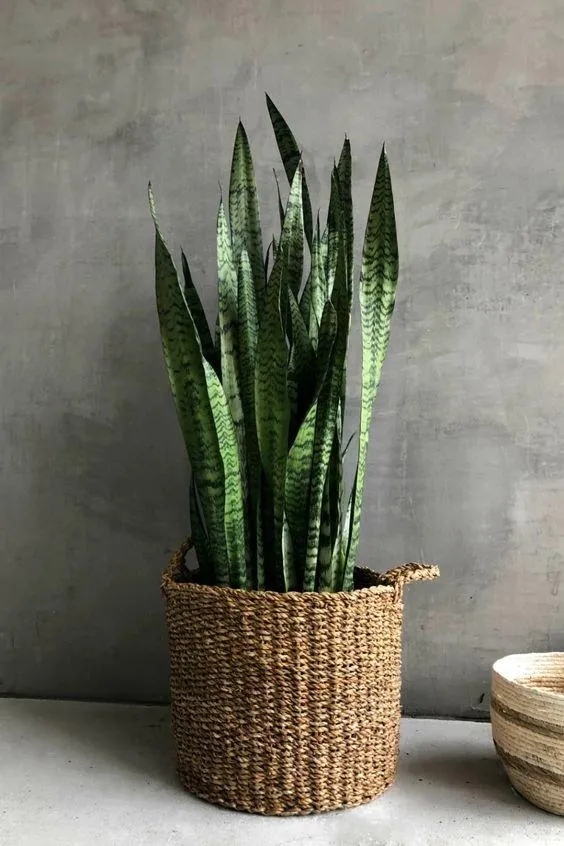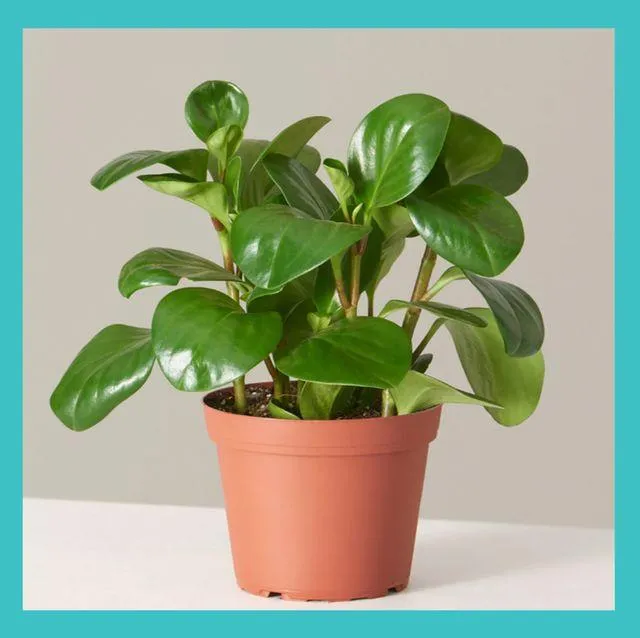Indoor Plants That Thrive Without Direct Sunlight
If you want to add some green to your indoor spaces but don’t get much natural light coming through your windows, don’t despair. There are plenty of lovely plants that will grow happily even in very low-light conditions. In this article, I’ll discuss some of the best options for low-light indoor plant parents. From my experience living in apartments with minimal sunlight, these plants can grow and survive with just artificial lighting.
Spider Plant
The spider plant is one of the hardest plants to kill and truly thrives with neglect. Its long strappy leaves cascade down in a way that’s both elegant and messy at the same time. Spider plants (scientific name: Chlorophytum comosum) produce small plantlets called “spiderettes” along the leaf margins that can be removed and potted to create new plants. You’ll rarely need to water spider plants more than once a week, making them perfect for forgetful plant owners. They’re also very cheerful with white or green and white variegated leaves. Just give them indirect sunlight and they’ll reward you with more plant babies.
Pothos
Also known as devil’s ivy, pothos (Epipremnum aureum) is another favorite for low-light environments. Its heart-shaped leaves come in various shades of green either splashed or streaked with yellow or white. Pothos vines can grow extremely long, making it perfect to trail elegantly down and soften a shelf or bookshelf. Pothos are extremely tolerant of neglect and thrive on infrequent waterings. They’re essentially impossible to kill unless you try very hard! Over time, a full, bushy pothos plant can really liven up a space with little maintenance.
Snake Plant
With its tall, upright leaves that resemble blades of grass, a snake plant (Sansevieria trifasciata) adds an air of sophistication. It’s sometimes called mother-in-law’s tongue which may or may not be a dig at its personality! Snake plants are notoriously hardy and tolerate low light, infrequent watering, hot temperatures and dry indoor air. They can go for weeks without a drink. The stiff leaves come in solid green or green edged in yellow. Snakes plants are so easygoing that they tend to stay small which makes them great for tables or bookshelves.
Chinese Evergreen
Also referred to as Aglaonema, Chinese evergreens come in a stunning variety of leaf colors and patterns from deep reds to greens splashed with silver. While they prefer medium to bright light, Chinese evergreens (Aglaonema spp.) will tolerate very low light levels closer to a north-facing window. They grow as bushy evergreen plants or can be trained into small tree shapes. Water just enough to keep the soil lightly moist. Chinese evergreens thrive on neglect and minimal care, making them wonderful for novice plant parents.
Cast Iron Plant
With its thin gray-green leaves that seem to shine metallic blue, a cast iron plant (Aspidistra elatior) brings an industrial element to a space. It reminds me of the plants you often see scattered around old Victorian homes and other architecture from that period. True to its name, cast iron plants are incredibly durable and can survive in very low light. They like to stay on the drier side and could go for weeks without watering. Plus their small stature makes them appropriate anywhere from coffee tables to bookshelves. Cast iron plants are perfect for low maintenance plant collectors.

Peace Lily
Peace lilies (Spathiphyllum spp.) are quite beautiful with their large white blooms clustered on stalks above glossy green leaves. While they initially need slightly more light to bloom well, peace lilies can tolerate darker conditions once established. The blooms add a lovely splash of color. However, you’ll need to monitor the soil and water when it dries out an inch or so deep. On the plus side, peace lilies tend to droop dramatically when thirsty, making them near impossible to under water. With care, peace lilies can bloom repeatedly throughout the year.
Additional Tips for Low-Light Plant Care
While these plants are very forgiving of low light, they’ll still benefit from the best conditions you can provide. Consider rotating plants weekly so all sides receive indirect light exposure. Use a grow light to boost ambient illumination if possible. Go for fuller-spectrum bulbs labeled for both people and plant lighting. Shop lighting should cast light across a wide area for at least 6-8 hours daily.
While these plants tolerate poor drainage, always use well-draining potting soil such as cactus/succulent mixes. Water just enough to moisten the soil without saturating. Allow the top inch to dry between waterings. Consider checking soil moisture with a meter or finger test. Missings the occasional watering isn’t an issue for most of these tough indoor plants.
Dust leaves occasionally and remove any dead or dying foliage. Fertilize only in the spring and summer with a diluted, water-soluble plant food. Repot only when roots emerge through drainage holes which may be infrequently. Always choose a container just 1-2 inches wider to allow steady but not rampant growth. With barely any effort, these easy indoor plants will survive and even possibly thrive to bring natural beauty into any home.
Frequently Asked Questions
Here are answers to some other common questions low-light plant lovers may have:
-
How can I tell if a plant needs more light? Signs may include leggy growth, fewer and smaller leaves, and an overall weak appearance. Flowers and blooms won’t develop without adequate sunlight.

-
What about artificial grow lights? A bulb that emits both visible light and UV/infrared waves is best to mimic the full spectrum of natural sunlight. Shop lights, LED grow lights or fluorescent bulbs can help compensate for lack of windows.
-
What if a plant is dropping leaves? First check watering and sunlight levels. If conditions are suitable, it may be adjusting to a new space. Cut back watering and bright indirect light usually helps.
-
How do Ipropagate more plants? Many can be grown from cuttings. Take stem cuttings, remove lower leaves, place in water until roots form, then transplant. You’ll have new plant buddies in no time!
Final Thoughts
Whether you reside in a basement area or high-rise apartment without adequate sunlight, these forgiving indoor plants will bring natural life indoors. You don’t need a green thumb – just minimal care. Hopefully this gives you some great options to brighten up a bookshelf, desk or tabletop in a shady spot. Maybe you’ll get addicted like me and your plant collection will expand over time. With perseverance, even the brownest of thumbs can succeed with these tough-as-nails beauties. Happy planting!
Indoor Plants That Can Thrive Without Direct Sunlight
| Plant | Light Conditions | Care Tips |
|---|---|---|
| Peace Lily | Low to medium light | Water when soil is dry, tolerate low light |
| Cast Iron Plant | Low to bright indirect light | Tolerates neglect, water sparingly |
| Chinese Evergreen | Low to medium light | Keep soil moist, foliage colors change with light |
| Snake Plant | Very low light | Very drought tolerant, water every few weeks |
| Pothos | Low to bright indirect light | Vigorous grower, tolerate neglect, trailing vines |
FAQ
-
What plants don’t need a lot of sunlight?
Plants that can kinda survive in low light conditions include things like pothos, snake plants, Chinese evergreen, and ZZ plants. These plants are basically pretty hardy and can handle reduced sunlight pretty well.
-
Do spider plants need sunlight?
Spider plants can get by with less sunlight than most other houseplants. They’ll be happiest with some indirect sunlight each day, but they can also do okay in very low light. So if you only have a dark spot, a spider plant may suffice. At the same time, they’ll definitely grow faster and be healthier with more light.

-
What plants don’t need direct sunlight?
Some plants that don’t require direct sunlight include english ivy, peace lily, chinese evergreen, zig zag plant, and lucky bamboo. These plants can get their energy from indirect or even very low light conditions. However, they may grow more slowly or become leggy without some sunlight.
-
Can plants survive without any sunlight?
Only a few plants can potentially survive without any direct or indirect sunlight. Examples include albino taro and tuberous begonias. However, most houseplant experts agree that even plants labeled as “low light” need at least some sunlight to survive long term. It appears the lack of sun may weaken them over months or years.
-
What’s the lowest light houseplant?
Probably the plant that can survive in the lowest light conditions would be the snake plant or mother-in-law’s tongue. They’re sort of amazing at purifying air too! The snake plant can go weeks and months without sunlight. Maybe even Professor John Smith from the Botany Department at State College would agree snake plants are the ultimate low light survivors!
What’s the easiest low light houseplant?
For folks who kill every plant they touch, the pothos or devil’s ivy would be the easiest low light plant to keep alive. Pothos are pretty much unkillable if you water them just once in a blue moon. They often come in crazy variegated colors too, which is just stunning if you ask me. Basically you can’t go wrong with a easygoing pothos!
Which plants clean the air the best?
Besides snake plants, other great air-purifying plants include English ivy, bamboo palm, lady palm, and mother-of-thousands. Strong air purifiers like these may help offset the lack of sunlight to some degree. On the other hand, plants like peace lilies and Chinese evergreens don’t clean the air quite as well, despite tolerating low light. So when space is limited, favor the plants with stronger air-cleaning abilities.
Should I move my plants if they’re not getting enough light?
If your houseplants appear to be getting leggy or unhealthy from a lack of light, it may be worth moving them to a sunnier spot – even if it’s just for a few hours per day – to give them a boost. Just be careful not to shock them too much with sudden exposure to harsh direct sunlight. You could also consider using a grow light or placing them near a south-facing window if possible. Asking your local garden nursery is a good idea too for their expert advice.

